Charlesworth Forest is the name given by Coffs Harbour Region Landcare (CHRL) and the National Parks and Wildlife Service (NPWS) to the littoral rain forest within the basin of Charlesworth Bay and its adjacent headland. It is comprised of four patches of native forest labelled A-D in the diagram below.

The largest part is to be found within Pacific Bay Resort (PBR), largely within its Lot 6. There is a large coastal strip that is a part of the Coffs Coast Regional Park, whilst small components are within the Strata for the Pacific Villas on Five Islands Drive (FID) and another surrounding Club Wyndham (Lot 3, 6 Resort Drive). Part of it falls within the NSW Midnorth Coast Save our Species Littoral Rainforest Site that receives special attention and monitoring from the NPWS.
The Charlesworth Forest is an almost unique example of Coffs Coast littoral rainforest. It is not part of the ongoing development plan for the Pacific Bay Resort and is presumably destined to be preserved into perpetuity. Its value therefore cannot be overestimated.
Tree species found:
- Tuckeroos (Cupaniopsis anacardioides)
- Corkwood (Endiandra sieberi)
- Brown laurel (Cryptocarya triplinervis)
- Wild quince (Guioa esmiglauca)
- Yellow tulipwood (Drypetes deplanchei)
- Beach birds eye (Alectron coriaceus)
- Coastal headland banksia (Banksia integrifolia)
- Grey ironbark (Eucalyptus siderophloia)
- Blackbutt (Eucalyptus pilularis)
- Forest red gum (Eucalyptus tereticornis)
- Coastal she-oak (Casuarina equisetifolia)
- Coast grey box (Eucalyptus bosistoana)
- Scribbly gum (Eucalyptus racemosa)
- Brush box (Lophostemon confertus)
- Small leaved lilly pilly or riberry (Syzygium luehmannii)
- Port Jackson Pine or Callitris rhomboidea
Palms found:
- Fan palms (Licuala species)
- Pandanus
- Cabbage tree palm (Listona species)
Grasses found:
- Kangaroo grass (Themeda tiandra)
- Round sawsedge (Gahnia aspera)
- Red-fruit saw sedge (Gahnia sieberiana)
- Bladey grass (Imperata cylindrica)
- Broad-leafed lomandra (Lomandra longiflora)
Vines found:
- Barbed wire vine (Smilax australis)
- Water vine (Cissus hypoglauca)
- Flagellaria (Flagellaria indica)
Other:
- Cockspur thorn (Maclura cochinchinensis)
- Swamp or Prickly Hibiscus (Hibiscus diversifolius)
As Coordinator of the Pacific Villas and Charlesworth Forest Landcare Site, and over a period of ten years, I have been able to coordinate the rehabilitation of about half of this forest with the assistance of:
- The Pacific Villas Landcare Group
- Staff and contractors of Pacific Bay Resort
- Staff and contractors of NSW NPWS Coffs Harbour
- Newearth Bush Regenerators
- Envite Bush Regenerators
- Coffs Coastal Works
This area is delineated in white in the diagram above and marked A.
The work required has largely been the removal of exotic weed species (senna, ochna, murraya, lantana, camphor laurels in the forest, bitou bush and exotic grasses on the headland, Brazilian nightshade and Singapore daisy on the beach, balloon cotton and crofton weed on the wooded north slope of FID). Regeneration of native species has been occurring and can be best seen in the forest to the north of the Pacific Villas and along the Solitary Island Walkway. Here can be found an understorey of native grasses (mostly gahnia) that enables a delightful water view through the forest that was once just a wall of weeds. We have also assisted rehabilitation of the forest with plantings of lomandra on the headland, coastal lilies, pandanus palms and native laurels along the beach front.
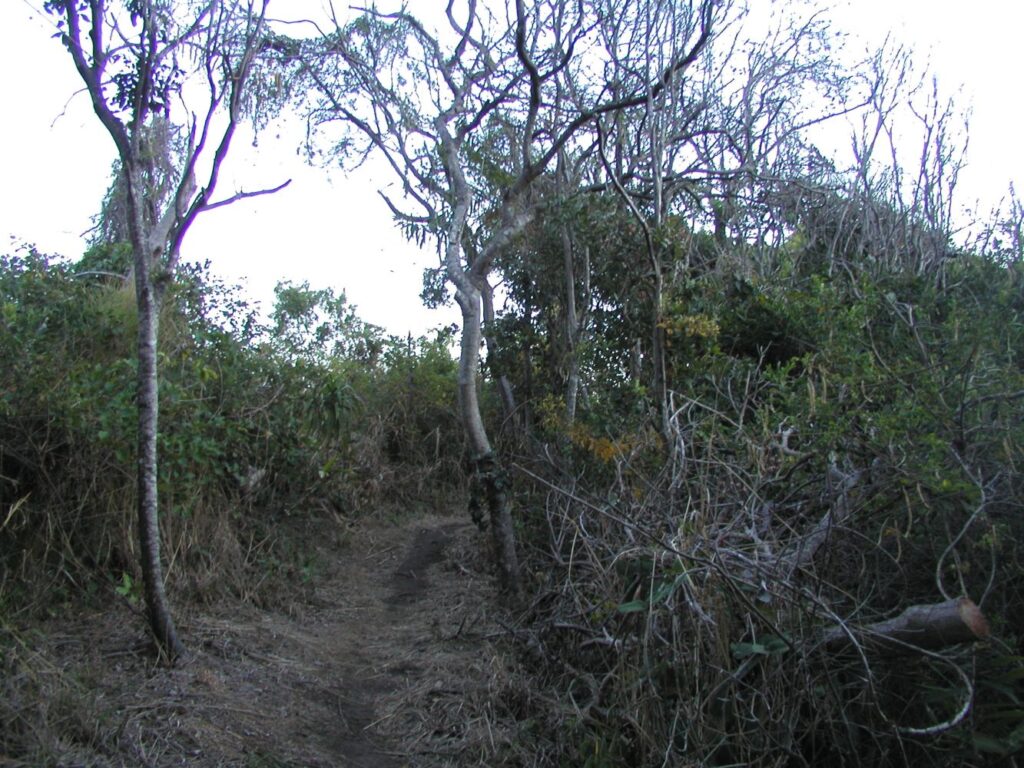
August 2004 (above): Typical of the degraded flora of the Forest
December 2024 (below): Restored Forest from the East Gate of Five Islands Drive
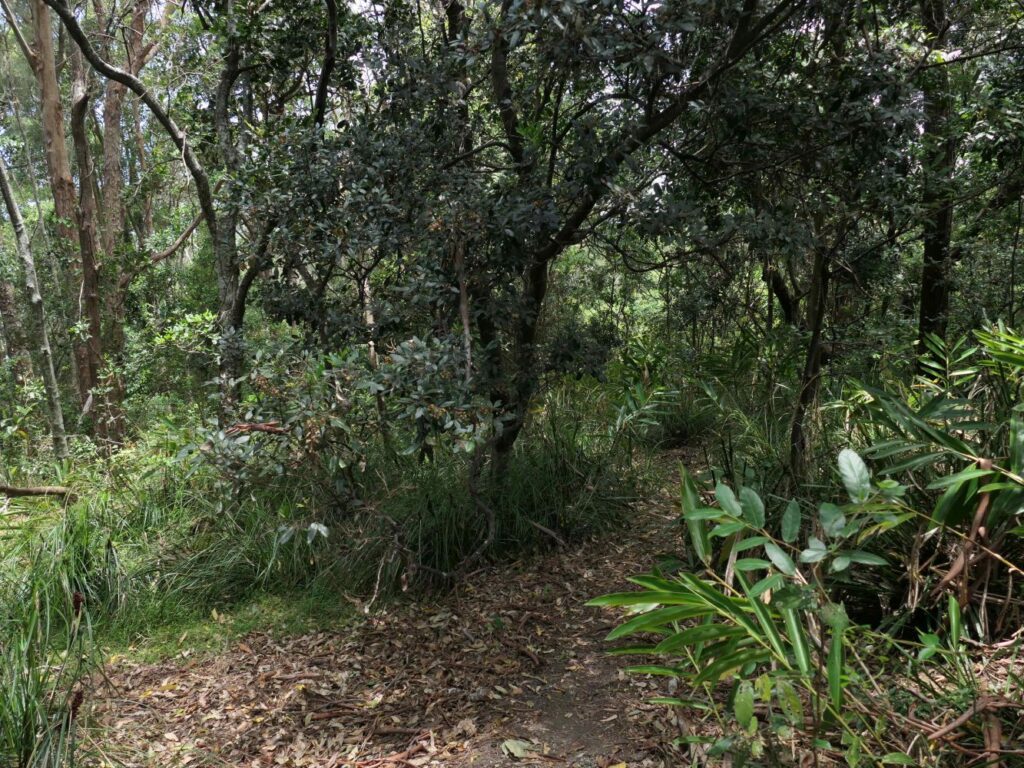
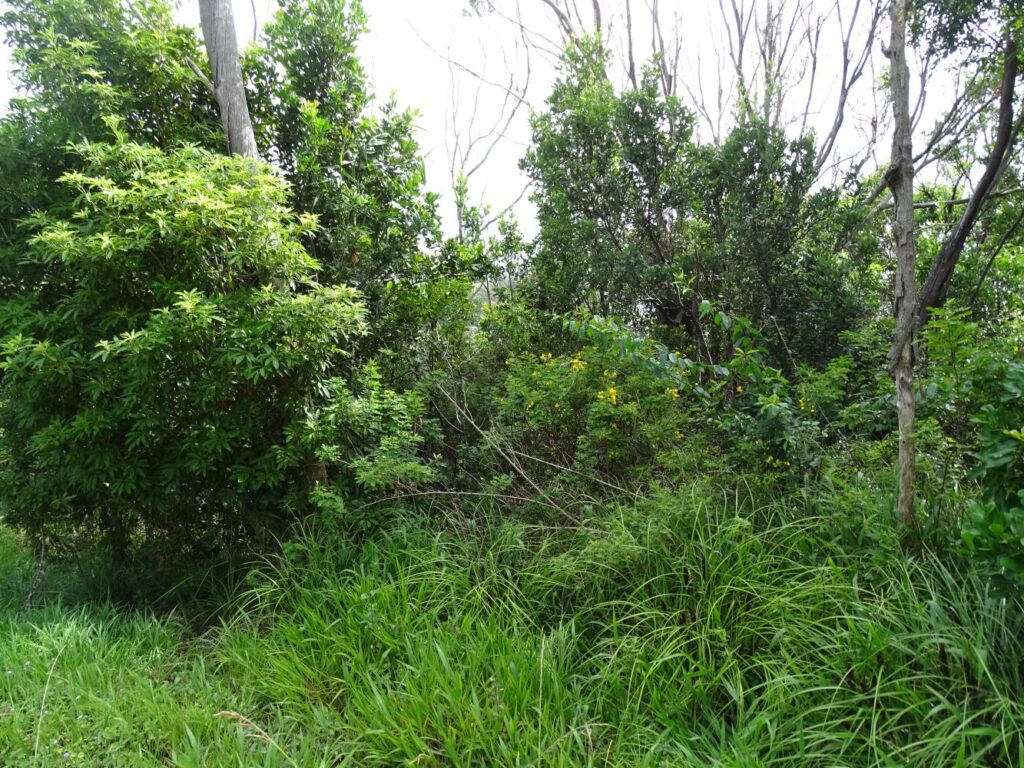
March 2016 (above): The wall of weeds below the sewerage easement, north of Pacific Bay Villas 9-12.
December 2024 (below): Same area with the weeds removed. Ocean and beach are now visible between the tree canopy and the native grass layer.
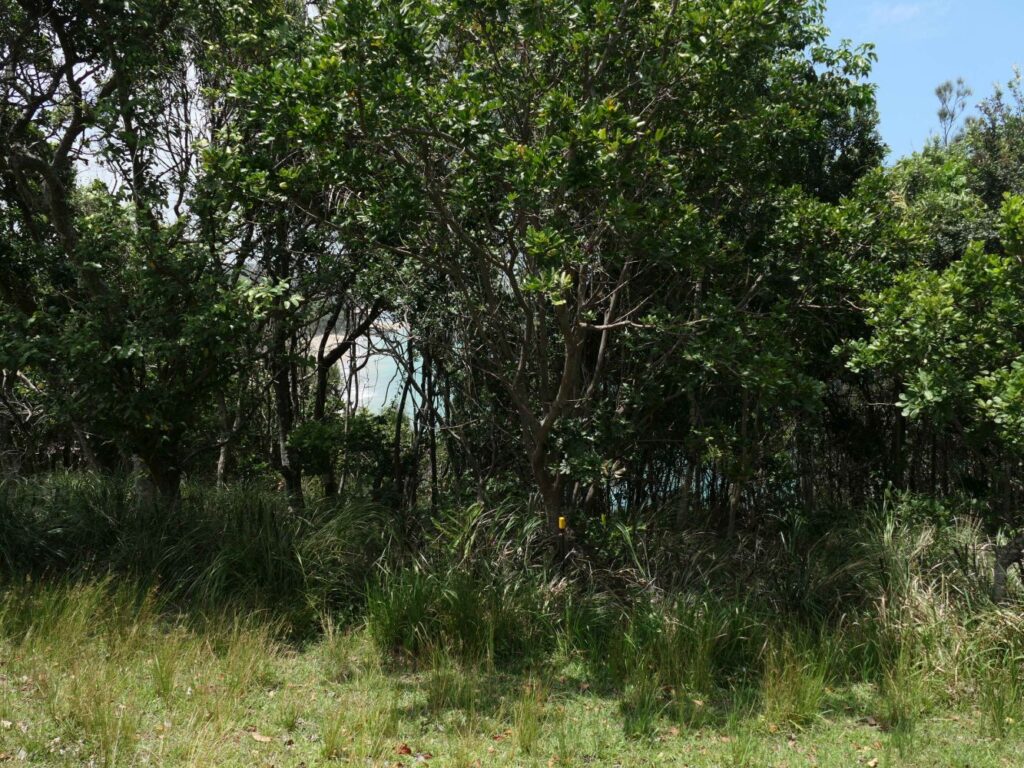
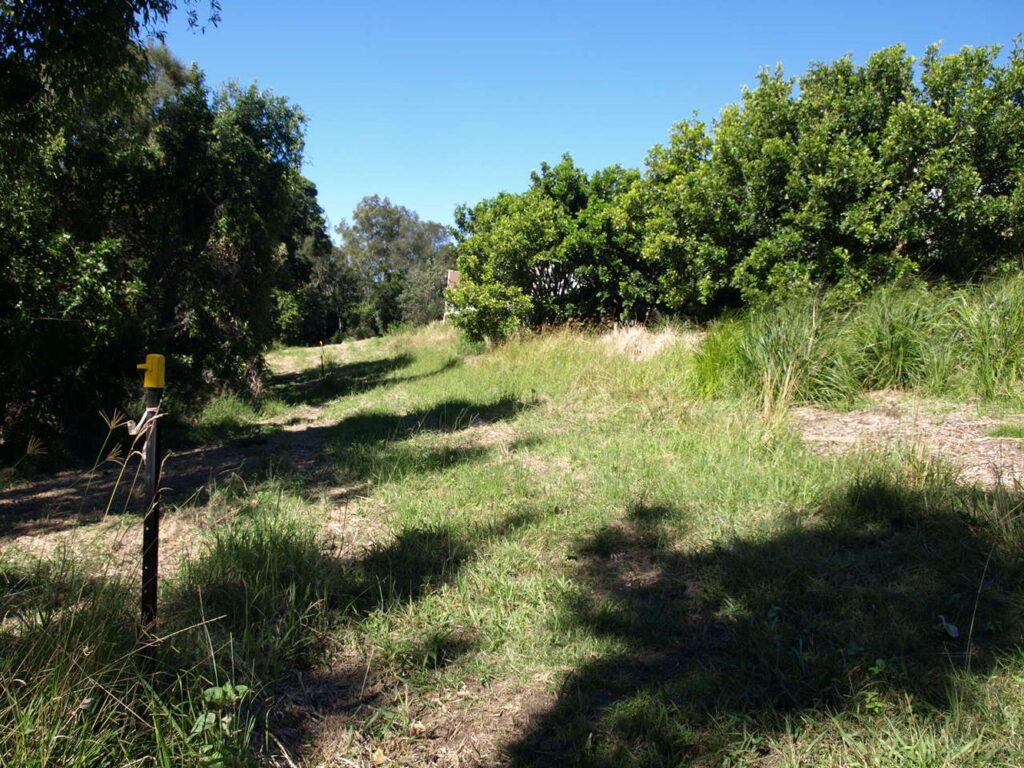
May 2015 (above): Sewerage easement looking east
December 2024 (below). Same view
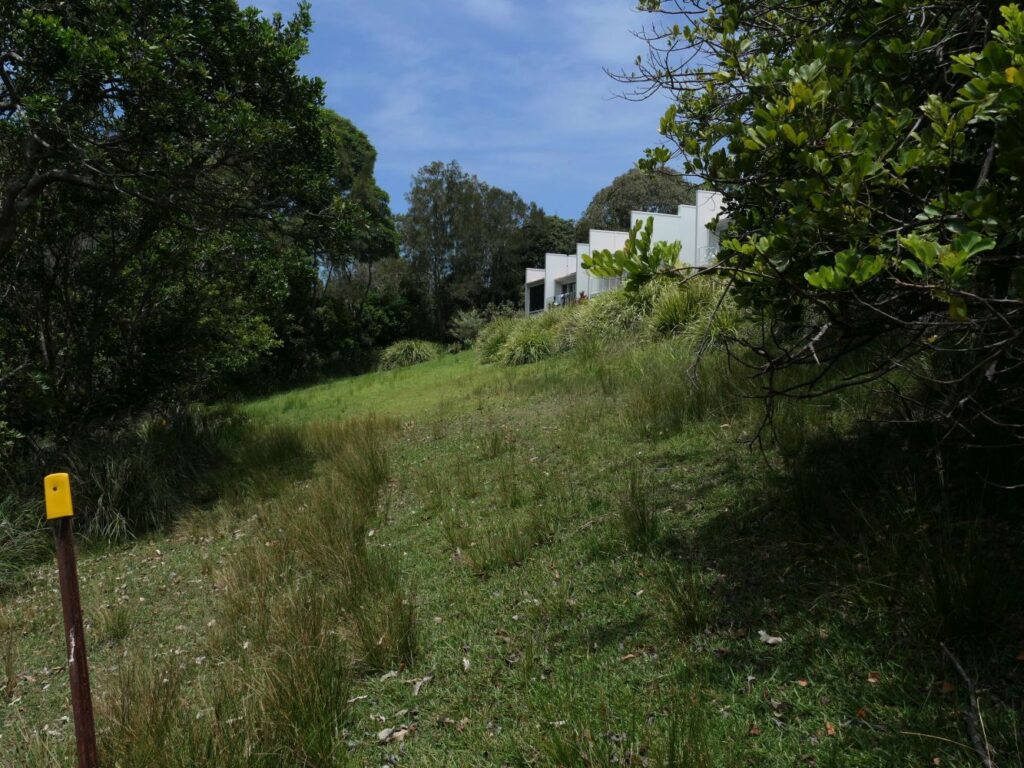
Threats to the Charlesworth Forest
There are three ongoing threats as follows:
- Uncontrolled weed growth and loss of mature trees from strangulation by vines within Areas A-C in the map above.
- Predation by feral deer.
- Climate variability.
Five years of drought, followed by 2 years of exceptional rainfall, has resulted in the death of quite a number of saplings and mature trees. There is little that can be done about this except to encourage the growth and health of replacement species.
All efforts possible are required for the control of the deer whose impact goes far beyond their damage to our domestic gardens. By grazing on emerging replacement trees and damage to the bark of saplings, the deer are visibly changing the balance of species within the forest. The culling that is currently occurring is endorsed but needs to continue, possibly indefinitely.
Collage of Images
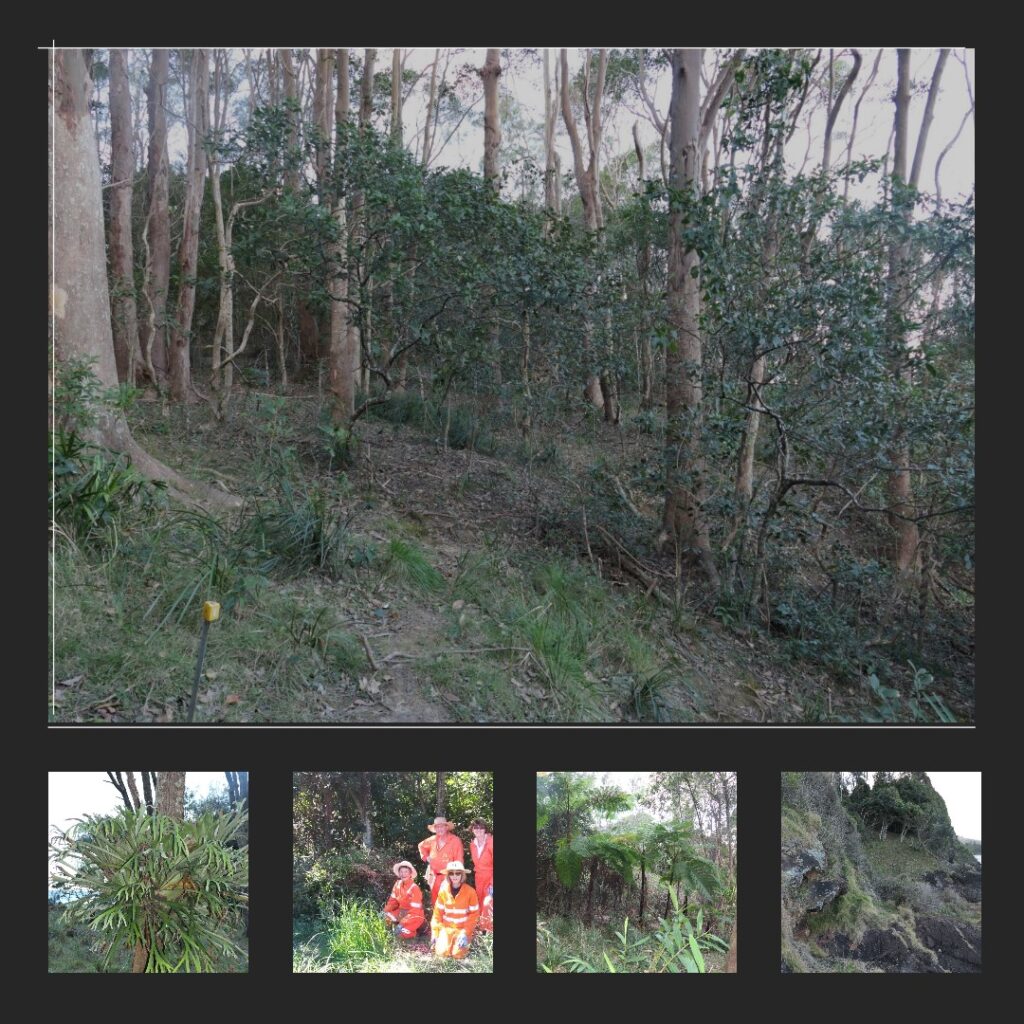
Updated December 2024